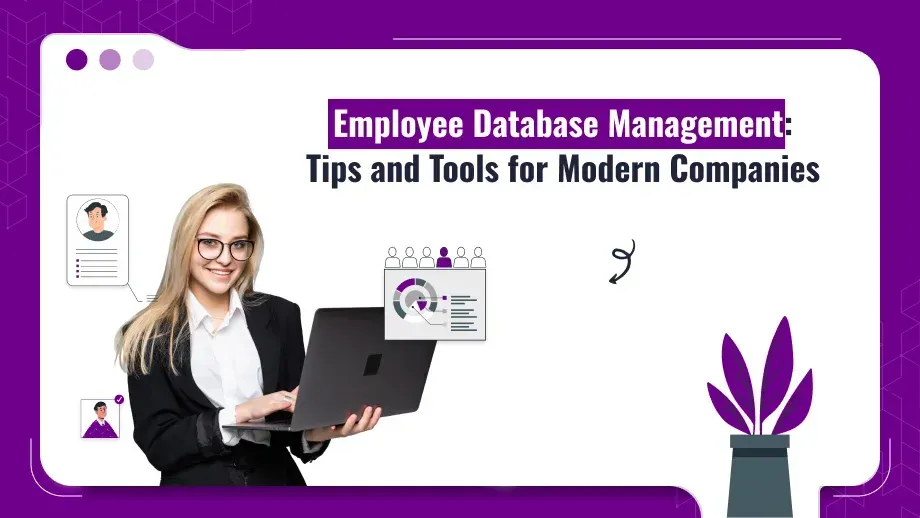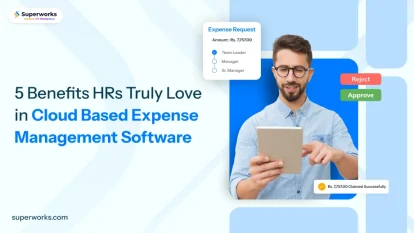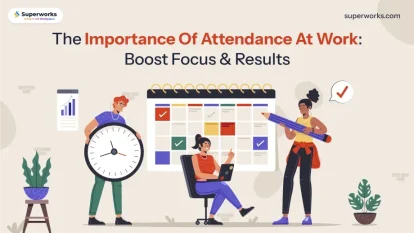
As any business grows, managing employee data is key. As businesses grow, they produce massive amounts of information about the employee’s records, pay, performance, and compliance. When you put the appropriate employee database management, it is possible to manage and store these data efficiently and provide access to the data while making sure it is secure and in compliance. This guide will help you understand the most effective strategies, methods, tools, and developments in employee data management to help you get the most value out of your management of data.
What is Employee Database Management
Employee database management involves collecting data, organizing, and storing, as well as managing employee data. The information can vary from contact details for basic information to health records for payroll, reports, data on performance as well as compliance records. A computerized employee database management system is vital to ensure that the data is handled securely and effectively. If there is no system in place, the management of the personal data of employees could quickly spiral out of hand and can lead to mistakes, security risks, and issues with compliance.
Through centralized employee database management, businesses can make sure employees’ data is correctly updated and easily accessible to those who need it when required. The managers will have all the data they require to judge performance, keep track of performance, and track pay.
Why is Employee Database Management Important?
Here are some reasons to consider:
- Efficiency: A well-managed employee database can be retrieved swiftly, cutting down administrative time and allowing funds for other strategic tasks.
- Compliance: Businesses are obliged to keep and handle the personal data of employees in line with lawful regulations like GDPR, HIPAA, and local labor legislation. A proper data management system is in conformity with these guidelines as well as protection against penalties.
- Security: Employee data including personal identification numbers and payroll records is sensitive. Making sure that data is secure is essential to maintaining confidence in the company and safeguarding against data breaches.
- Improved Decision Making: A central system gives access to the data of employees which allows businesses to use the data to make better choices. In particular, monitoring the employee’s performance over time may assist in identifying areas that need improvements and help guide promotions and compensation decisions.
Employee Database Management Challenges
A computerized employee database management system is crucial, but is not without its own set of difficulties. Businesses must overcome these obstacles to handle the data effectively and securely.
1. Data Accuracy and Consistency
One of the most difficult tasks when it comes to employee databases is making sure that the information is correct and constant. As organizations grow, managing massive amounts of data from employees is becoming more difficult. Manual data entry leads to errors and outdated information can sit in the system if not updated regularly. This inconsistency can lead to misinformed business decisions and complications during compliance audits.
To overcome this companies should audit their employee database regularly and set up automated systems to flag errors or inconsistencies in real-time. An employee record management system can automate these processes and keep the data accurate.
2. Data Security and Compliance
With data breaches on the rise securing employee data is more important than ever. Data security risks are highest when companies store sensitive information like Social Security numbers, payroll records and health data. Not securing this data can mean loss of employee trust and severe fines.
To minimize the risks, businesses need to invest in security procedures such as encryption of data as well as multi-factor authentication, and tight control of access to users. The security of an employee database system ensures only those who have been authorized can access sensitive information and reduces the possibility of exposure through accident.
3. Accessibility and Usability
Security is important but so is accessibility. Too restrictive systems can slow down operations and frustrate users. Too few restrictions can expose sensitive data to unauthorized users.
All it is about is balance. Businesses should implement management systems that enable administrators to obtain the information they require, while also having robust security safeguards implemented. Tools like HRMS platforms have customisable access controls so each user can only access the data they need to do their job.
Increase employee happiness and productivity while lowering your employee database management!
Manage your employees more effectively & engage them!
Employee Database Management Best Practices
Employee database management requires best practices to keep data organized, secure and accessible. Here’s how to do it:
1. Get an Employee Database Management System
An employee database management system (EDMS) and performance management documentation is the base of good data management. This should integrate with existing software and allow businesses to store and retrieve employee information fast. Systems like HR Management Software, Employee Management Software and HRMS database provide centralized solutions for managing employee records, payroll data and compliance documentation.
2. Audit Regularly
Auditing your employee database regularly means data remains accurate and up-to-date. Audits will identify and correct inconsistencies, remove outdated information, and ensure all employee data complies with the law. Regular data reviews will also highlight opportunities to streamline data management processes.
3. Data Storage and Access Controls
Incorporating cloud ETL tools into your strategy can further enhance data security by efficiently extracting, transforming, and loading sensitive information while maintaining compliance with security standards.
4. Automate Data Entry and Processing
Hand-written data entry manually hand is time-consuming and could cause errors. Data entry which is automated by the employee management software reduces the chances of committing errors and frees up time for HR employees to concentrate on their other duties. Automation helps ensure data accuracy because information once entered is refreshed across all systems.
5. Categorize Employee Data
Data categorisation makes it easier to retrieve information when needed. Common categories in an employee database might be personal details, performance records, payroll history and benefits information. Categorizing data like this means the right information is available to the right people at the right time.
Employee Database Management Tools
Here are some of the most popular tools:
1. HR Management Software (HRMS)
HRMS platform centralizes all employee data from personal information and performance metrics to payroll and benefits. These platforms are one stop shop for managing employee data and often have advanced features like analytics and reporting. A full hrms software in India will automate many HR tasks and make data management more efficient and reduce errors.
2. Employee Record Management Systems
An employee record management system is focused on storing and securing employee records including contracts, performance reviews and legal documentation. These systems will ensure records are easily accessible while maintaining high security and compliance with the law.
3. Cloud HRMS Solutions
Many are moving to cloud HRMS database platforms for flexibility and scalability. Cloud based systems allow companies to store large amounts of employee data and have access to authorized personnel from anywhere with an internet connection. These platforms are also highly secure with automatic backups and disaster recovery options.
Using Employee Data for Decision-Making
Data on employees isn’t mere records. It’s a source of information that can help inform the business’s strategy. By employing workforce and predictive analytics, organizations can obtain information about the performance of employees, patterns regarding turnover, and other key factors that impact the process of making business decisions.
Predictive Analytics and Workforce Planning
Utilizing predictive analytics allows companies to anticipate the requirements of their employees and also identify the areas of talent shortages and develop innovative strategies for recruiting. By analyzing, for instance, recent employee performance information and rates of turnover companies can predict future needs for hiring as well as build a more durable workforce.
Employee Performance Analytics
Tracking employee performance through an employee management system will allow companies to identify top performers, areas for improvement and offer targeted development programs. These insights will lead to better workforce management and more informed decisions on promotions, bonuses and training initiatives.
Compliance and Data Security
Compliance with laws regarding data protection is key for the proper management of employee information. It is the law of GDPR in Europe as well as data privacy laws in various countries require companies to safeguard and manage employee data securely. The violation of these laws can cause significant fines as well as harm to the image of your company.
Data Encryption and Access Control
Secure encryption methods will guarantee that employees’ data is secure from access by unauthorized persons, at both the time of storage and during transmission. Access controls must also be put in place to restrict access to data only for people who require it to fulfill the job they are performing.
Data Audits for Compliance
Regularly auditing your employee database ensures that your database is in compliance with the laws on data protection and rules. By examining how information is collected, stored, and accessed, businesses can spot the weaknesses in their compliance plan and act before problems develop.
The Future of Employee Database Management
As technology advances so does the employee database. Automation is the future, AI (AI) as well as machine learning. They will also simplify the management of data, decrease the chance of errors, and give more insight into trends and possibilities in the workplace.
Employee Data Management Trends
- AI-Driven Automation: Automating HR task processes like performance and payroll reviews using AI will reduce time as well as increase efficiency.
- Mobile-Friendly Platforms: The rising demand for mobile access to the data of employees has forced companies to implement a mobile-accessible HRMS platform that allows supervisors to handle their employee data easily.
Employee Self Service
One of the newest innovations in employee databases includes the integration of self-service portals through which employees are able to update their details view their pay documents and make requests for time off. This eases the burden for HR personnel allows employees to control their information, and ensures your organization will be able to be able to keep up-to-date data without having to do continuous updates manually.
Mobile Friendly Platforms
With remote working on the rise the need for mobile-friendly HRMS database platforms is growing. Modern systems have mobile apps that allow employees and managers to access HR data from anywhere. The platforms offer the flexibility to make sure employee records and key details can be accessible anywhere.
Summary
employee database management isn’t only about keeping records – it’s about making sure that the information is protected, available, and helpful in making decisions. By having the proper systems put in place, businesses will be able to simplify their data, increase the accuracy of the information they collect, and make more informed decisions regarding their employees. By following best practices like regular data audits, secure data storage and automation companies can change how they manage employee data and make it a strategic asset.
By using tools like HR Management Software, Employee Record Management Systems and cloud based HRMS platforms you can manage your employee data better. With predictive analytics and mobile friendly platforms the future of employee database is going to be more simplified, secure and data driven than ever.





